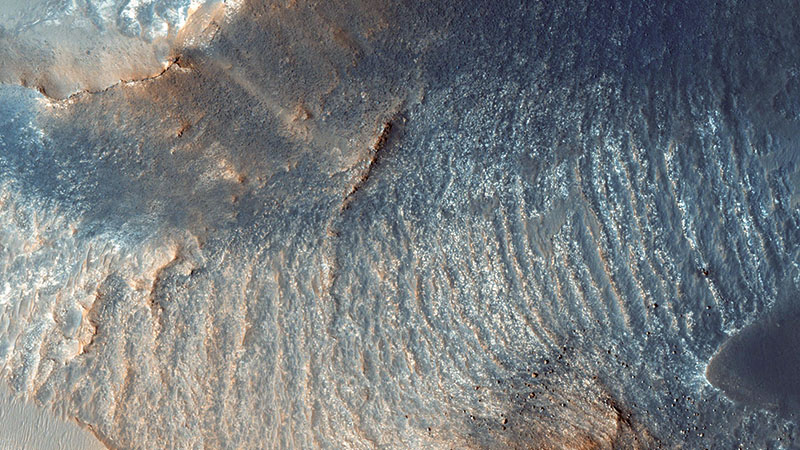Stay Up to Date
Submit your email address to receive the latest industry and Aerospace America news.
Now that a group of scientists and engineers has short-listed three possible landing sites for NASA’s Mars 2020 rover, a final workshop will be scheduled to discuss the options. That workshop will be sometime in early to mid-2018, says geologist John Grant, who co-chairs the Mars 2020 Landing Site Steering Committee and works at the Smithsonian Air and Space Museum’s Center for Earth and Planetary Studies.
Grant says that “whether there is one site, a primary and backup, etc., is TBD” by NASA Headquarters.
A February workshop in Monrovia, California, brought together upward of 250 scientists and spacecraft engineers to narrow a previously selected list of eight sites. I attended the workshop, which also covered the overall engineering status of the Mars 2020 rover.
Michael Mayer, lead scientist for the Mars exploration program at NASA Headquarters, kicked off the meeting by saying the site selection “is not a contest,” that there’s not “a winner” and “there’s no prize.” He called for “open and honest” discussion.
After nearly three days of deliberative and contentious debate, the researchers cast their votes via computer.
Rising to the top of the green-lighted list of sites were two areas where no spacecraft has ever touched down and one that was explored by NASA’s Spirit rover before it got stuck in the sand and stopped operating in 2010. These are the locations in order of preference:
- Jezero Crater, the site of a dried-up lake bed and possibly a repository of past microbial life.
- Northeast Syrtis Major, a huge shield volcano neighboring a large impact basin and an area once warm and wet long ago.
- Columbia Hills/Gusev Crater, previously surveyed by NASA’s Spirit rover and flush with hot spring sinter deposits that could be similar to those that harbor microbial life on Earth.
Allen Chen of NASA’s Jet Propulsion Laboratory in California, who is the entry, descent and landing lead for the mission, underscored during the workshop that the ability to land at a more precise location than previously possible opens the door to being more daring. All eight sites that were appraised were cleared for a prospective landing by the Mars 2020 rover, Chen said.
The prospect of a robotic return to Columbia Hills, and not to unexplored landscape, touched off heated talk. Backers of that site said that before Spirit stopped functioning there, the machine found an ancient and eroded volcanic ash deposit. At some time a hot spring was active there and, therefore, the site has the potential to reveal signatures of past Martian life.
Wherever it lands, the Mars 2020 rover will prowl for astrobiologically relevant samples and encapsulate them for future pickup and delivery to Earth. But there’s a catch: There is no funded Mars mission beyond Mars 2020. ★
“Whether there is one site,
a primary and backup, etc.,
is TBD” by NASA Headquarters.
John Grant, co-chair of the Mars 2020 Landing Site Steering Committee
About leonard david
Leonard has reported on the space industry for five decades. He is the author of several books, including “Moon Rush: The New Space Race” and “Mission to Mars — My Vision for Space Exploration,” co-authored with Buzz Aldrin.
Related Posts
Stay Up to Date
Submit your email address to receive the latest industry and Aerospace America news.




